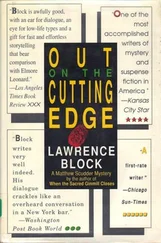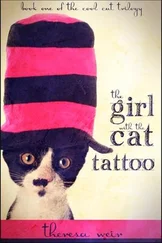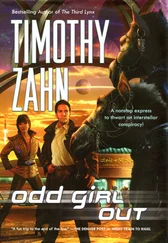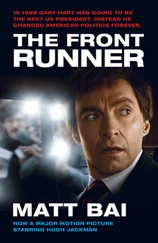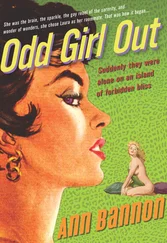ALSO BY BART VAN ES
Shakespeare’s Comedies
Shakespeare in Company
A Critical Companion to Spenser Studies
Spenser’s Forms of History
PENGUIN PRESS
An imprint of Penguin Random House LLC
375 Hudson Street
New York, New York 10014
penguin.com
Copyright © 2018 by Bart van Es
Penguin supports copyright. Copyright fuels creativity, encourages diverse voices, promotes free speech, and creates a vibrant culture. Thank you for buying an authorized edition of this book and for complying with copyright laws by not reproducing, scanning, or distributing any part of it in any form without permission. You are supporting writers and allowing Penguin to continue to publish books for every reader.
Photographs courtesy of Hesseline de Jong
LIBRARY OF CONGRESS CATALOGING-IN-PUBLICATION DATA
Names: Van Es, Bart, author.
Title: The cut out girl : a story of war and family, lost and found / Bart van Es.
Description: New York, New York : Penguin Press, [2018]
Identifiers: LCCN 2018006209 (print) | LCCN 2018007268 (ebook) | ISBN 9780735222250 (ebook) | ISBN 9780735222243 (hardback)
Subjects: LCSH: De Jong, Hesseline—Childhood and youth. | Jewish children in the Holocaust—Netherlands—Biography. | Jews—Netherlands—Biography. | Holocaust, Jewish (1939-1945)—Netherlands—Biography. | Van Es, Bart. | BISAC: BIOGRAPHY & AUTOBIOGRAPHY / Personal Memoirs. | HISTORY / Jewish. | HISTORY / Holocaust.
Classification: LCC DS135.N6 (ebook) | LCC DS135.N6 D428 2018 (print) | DDC 940.53/18092 [B]—dc23
LC record available at https://lccn.loc.gov/2018006209
Version_1
for
Charles de Jong and Catharine de Jong-Spiero
and
Henk van Es and Jannigje van Es-de Jong
CONTENTS
Also by Bart van Es
Title Page
Copyright
Dedication
Prologue
One
Two
Three
Four
Five
Six
Seven
Eight
Nine
Ten
Eleven
Twelve
Thirteen
Fourteen
Fifteen
Sixteen
Seventeen
Eighteen
Nineteen
Twenty
Twenty-one
Twenty-two
Twenty-three
Twenty-four
Twenty-five
Twenty-six
Epilogue
Acknowledgments
About the Author
PROLOGUE December 2014
Without families you don’t get stories.”
The woman who tells me this stands making coffee in her apartment in Amsterdam. Her name is Hesseline, Lien for short. She is over eighty and there is still a simple beauty about her: a clear complexion without noticeable makeup; a little silver watch but no other jewelry; and shiny, unpainted nails. She is brisk in manner but also somehow bohemian, dressed in a long dark gray cardigan with a flowing claret paisley scarf. Before today I have no memory of ever having met her. All the same, I know that this woman grew up with my father, who was born in the Netherlands immediately after the war. She was once part of my family, but this is no longer the case. A letter was sent and a connection was broken. Even now, nearly thirty years later, it still hurts Lien to speak of these things.
From her white open-plan kitchen we move to the seating area, which is full of winter sunlight, filtered partly through stained glass artworks that are fitted against the panes. There are books, museum catalogs, and cultural supplements spread beneath a low glass coffee table. The furniture is modern, as are the pictures on the walls.
We speak in Dutch.
“You wrote in your e-mail about being interested in the family history and about maybe writing a book,” she says. “Well, the family thing doesn’t really play for me. The Van Esses were important in my life for a long time, but not now. So what kind of writing do you do?”
Her tone is friendly but also businesslike. I tell her a little about my work as a professor of English Literature at Oxford University—writing scholarly books and articles on Shakespeare and Renaissance poetry—but she knows most of this already from the Internet.
“So what is your motivation?” she asks.
My motivation? I’m not sure. I think hers could be a complex and interesting story. Recording these things is important, especially now, given the state of the world, with extremism again on the rise. There’s an untold story here that I don’t want to lose.
On this bright December morning we talk of world affairs, of Israel, of Dutch politics, and about the situation in Britain, where David Cameron’s coalition government is nearing the end of its five-year term. We move quickly from subject to subject, almost as in an interview for a job.
After perhaps an hour she pushes away her empty cup and speaks definitively:
“Yes, I have faith in this. Shall we sit at the table? Do you have a notebook and pen?”
I had not wanted to arrive like a reporter, so I need to ask her for paper and something to write with, but we are soon seated at the dining table, which is made of pale laminate wood. I can ask anything I want about what she remembers: what people said and did; what she wore and what she ate; the houses she lived in; and what she dreamed.
We sit in the bright, warm modernity of the apartment and our first meeting stretches on for hours. The documents—photographs, letters, various objects—appear only gradually as she thinks of them, but by midafternoon, with the light outside already fading, the table is covered in mementos. These include a children’s novel with a bright yellow cover featuring a steamboat, and a ceramic tile with a cartoon on it of a drowning man. There is also a photo album of red imitation leather that has a well-worn spine. On the first page of the album there is a picture of a handsome couple with the words “Mamma” and “Pappa” written beneath in blue pen.
The woman on the left in the photograph is Lien’s mother, whose name is Catharine de Jong-Spiero. She is perched on the edge of a rattan chair, the curved back of which envelops her. The sun is full in her face and she is smiling a little shyly. Her husband, Charles, Lien’s father, sits on the ground in front of her in his shirtsleeves, his large hands resting comfortably on his knees. He leans back against his wife, who has one of her hands on his shoulder, and he looks up with a confident, ironical gaze. There is an air of nonchalance about him, laughing at the idea of a posed photograph in a way that his wife, with her fixed smile, finds harder to do.
The man’s confidence is also there in a few more photographs pasted on the first page of the album. One shows him in the back of a motorcar, surrounded by a group of dapper young men. In secret he holds his fingers, like bunny ears, behind the head of the friend who poses in front of him with a pair of gloves and a cane.
In another he stands, hat in hand, in front of a large black doorway, his leg with its polished shoe thrust to the fore. There are about a dozen of these early pictures. The most crumpled of them—torn, folded, and restuck with yellowing glue—is of a beach party of twenty-three young men and women in bathing suits, smiling and embracing. A woman in white at the center holds up what looks like a volleyball. “Mamma, Pappa, Auntie Ro, Auntie Riek, and Uncle Manie” reads the handwritten text beneath.
Although I am unpracticed at interviewing, a rhythm soon develops to our conversation. I ask countless questions, probing away at some detail, scribbling down notes.
“What was the room like?”
“Where did the light come from?”
“What sounds could you hear?”
It is only when all the details of an episode are exhausted and she can tell me nothing further that we move on.
Читать дальше

